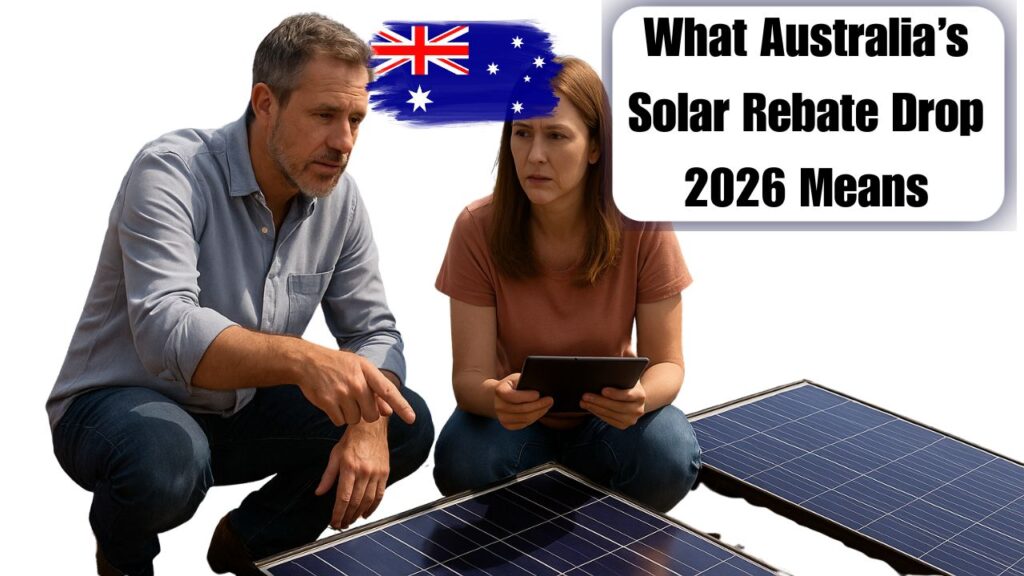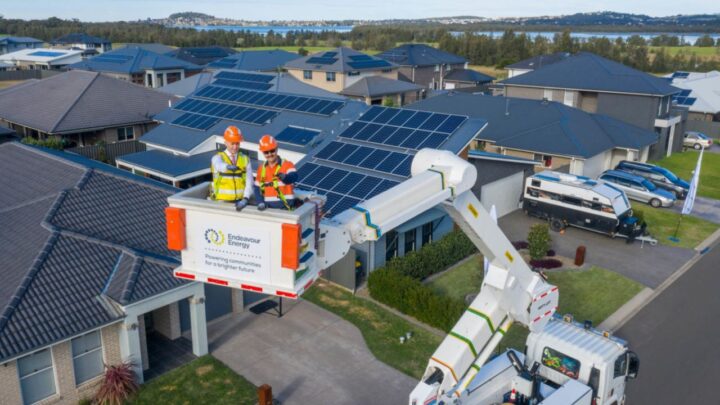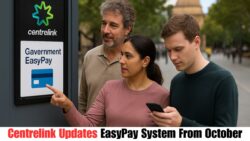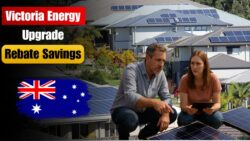Australia’s solar industry is undergoing another big change as the next solar rebate drop in 2026 approaches. For homeowners planning to install solar panels, this means both opportunity and urgency. The solar rebate reduction is part of the government’s gradual phase-out of the Small-scale Renewable Energy Scheme (SRES), which helps Australians cut upfront installation costs. As the rebate amount decreases yearly, understanding how this affects solar panel savings and return on investment becomes crucial for those aiming to lower energy bills and support Australia’s renewable future.

Understanding Australia’s 2026 Solar Rebate Reduction
The Australian government’s solar incentive scheme was designed to make renewable energy more affordable, but it’s being slowly reduced each year until it ends in 2030. In 2026, the rebate for solar installations will drop again, meaning the longer homeowners wait, the less financial assistance they’ll receive. The rebate value depends on the number of Small-scale Technology Certificates (STCs) generated by your system, which are calculated based on system size and location. Acting before the 2026 drop ensures homeowners maximize their solar investment returns and pay less upfront.
How the 2026 Rebate Drop Impacts Homeowners
For homeowners, the 2026 rebate reduction could lead to a significant change in installation costs. A typical 6.6 kW solar system might lose up to $500–$800 in rebate value compared to 2025 rates. This increase in cost may affect the payback period and overall energy savings. However, electricity prices continue to rise, so installing solar early still provides strong long-term benefits. By locking in current rebate values before they decline, Australians can secure higher savings and faster returns from their solar systems while reducing their carbon footprint.
 Victoria households to receive a $240 GWW credit in 2025 – Who qualifies, whether you need to apply
Victoria households to receive a $240 GWW credit in 2025 – Who qualifies, whether you need to apply
Why 2025–2026 Is the Best Time to Act
Experts say 2025 and early 2026 are the ideal windows to install solar panels before the next rebate step-down. Many solar retailers are offering promotions to help homeowners take advantage of current incentives. Additionally, with improvements in solar technology and battery storage, households can achieve greater independence from the grid. Acting now helps avoid higher future costs, ensures better energy efficiency, and positions homeowners to benefit from potential state-based incentives or feed-in tariffs still available in some regions across Australia.

Projected Rebate Values by Year
The table below shows how the solar rebate amount is expected to decline annually until the scheme’s planned conclusion in 2030. These figures are estimates based on current STC projections and may vary depending on location and market conditions.
| Year | Approximate Rebate Value (6.6 kW system) | Expected Reduction |
|---|---|---|
| 2025 | $2,100 | — |
| 2026 | $1,600 | ↓ $500 |
| 2027 | $1,200 | ↓ $400 |
| 2028 | $800 | ↓ $400 |
| 2029 | $400 | ↓ $400 |
| 2030 | $0 | End of SRES |
FAQ 1: What is the solar rebate in Australia?
It’s a government incentive that reduces the upfront cost of installing solar panels through tradable STCs.
FAQ 2: When will the solar rebate end?
The rebate will phase out gradually and is expected to end completely by 2030.
FAQ 3: How much can I save by installing in 2025?
Installing before the 2026 drop could save around $500–$800 depending on system size and region.
FAQ 4: Are there state-based solar incentives too?
Yes, several Australian states offer additional rebates, loans, or feed-in tariffs alongside the national scheme.





